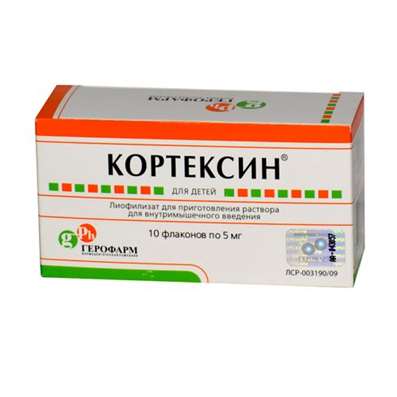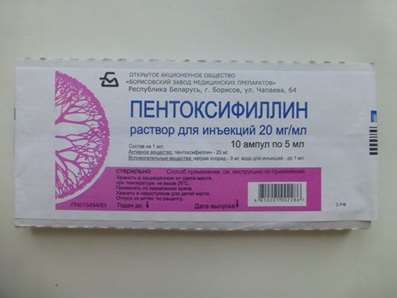Instruction for use: Xanax
I want this, give me price
Trade name of the drug – Xanax
Active substance: Alprazolam (Alprazolamum)
Dosage Form: Tablets
Composition:
Tablets: in multiples of 10, 20, 30, 50 and 100 pieces. 1 tablet contains alprazolam - 250 mcg, 500 mcg, 1 mg, 2 mg.
Pharmacotherapeutic group:
Anxiolytic (tranquilizer)
ATX Code
N05BA12 Alprazolam
The nosological classification (ICD-10)
F10.2 alcohol dependence syndrome: Alcoholism; Alcohol addiction; posiomania; Dependence on alcohol; dipsomania; drunken state; alcohol abuse; Ideatornoy violations in alcoholism; Quarterly booze; Obsessive craving for alcohol; Neurotic symptoms of alcoholism; Craving for alcohol; Psychoorganic syndrome in chronic alcoholism; Reduced craving for alcohol; Saint Martin's evil.
F10.3 abstinence: Alcohol withdrawal syndrome; abstinence symptom; Abstinence syndrome in alcoholism; abstinence; alcohol abstinence; alcohol withdrawal; Alcohol abstinence; Alcohol withdrawal syndrome; withdrawal disorder; withdrawal state; alcohol withdrawal syndrome; withdrawal syndrome; The syndrome of alcohol abstinence; alcohol withdrawal syndrome; Status of abstinence.
F32 Depressive episode: adynamic subdepression; Astheno-adynamic state subdepressive; Asthenic-depressive disorder; Asthenic-depressive state; Asthenic-depressive disorder; Asthenic-depressive state; Major depressive disorder; Sluggish-apathetic depression with inhibition; Double depression; depressive pseudodementia; Depressive disorder; Depressed mood disorder; Depressive disorder; mood Depressive disorder; the doldrums; Depressive disorders; Depressive syndrome; Depressive syndrome larvirovanny; Depressive syndrome with psychosis; masked Depression; Depression; exhaustion Depression; Depression with symptoms of lethargy within cyclothymia; Depression smiling; involutionary depression; involutionary melancholy; involutional depression; Manic-depressive disorder; masked depression; Melancholic attack; Neurotic depression; Neurotic depression; Shallow depression; Organic depression; Organic depressive syndrome; Simple depression; Simple melancholic syndrome; Psychogenic depression; Reactive depression; Reactive depression is a moderately severe; psychopathological symptoms; Reactive depression; Reactive depression; Recurrent depression; Seasonal depressive syndrome; Senesto-pathic depression; senile depression; Symptomatic depression; somatogenic depression; cyclothymic depression; Exogenous depression; lypothymia; Endogenous depression; The endogenous depressive syndrome.
F40.0 Agoraphobia: Claustrophilia; Fear of staying in a crowd.
F41 Other anxiety disorders: anxiety Relief; Nonpsychotic anxiety disorders; An alarm condition;
Anxiety; Disturbingly suspicious condition; Chronic anxiety; Sense of anxiety.
F41.2 Mixed anxiety and depressive disorder: Depression with anxiety and depressive components; Mixed anxiety-depressive states; Anxious depression; Anxious, depressed mood; Anxiety and depression; Anxiety-depressive syndrome; Anxious-neurotic state.
F44 Dissociative [conversion] disorders: Dissociative phenomena; Conversion disorder; Conversion symptoms; pseudodementia; Psychogenic psychosis.
F48 Other neurotic disorders: Neurosis; Neurological diseases; Neurotic disorders; Neurotic state; Psychoneurosis; Anxious-neurotic state; Chronic neurotic disorders; Emotional reactive disorder.
F48.0 Neurasthenia: Asthenic form of neurasthenia; Asthenoneurotic state; asthenoneurotic disorder; Influenza young workaholics; Flu of yuppie; neurotic disorders; neurasthenic state; neurasthenic syndrome.
G47.0 Disorders of falling asleep and maintaining sleep [insomnia]: Insomnia; Insomnia, especially difficulty falling asleep; desynchronosis; Prolonged sleep disturbance; Difficulty falling asleep; Difficulty falling asleep; Difficulty falling asleep; insomnia; Short-term and transient insomnia; Short-term and chronic sleep disorders; Short or shallow sleep; Violation of sleep; Disturbed sleep, especially in the phase of falling asleep; Infringements sleep; sleep disturbances; Neurotic sleep disturbance; Shallow superficial sleep; shallow sleep; Poor quality of sleep; Night awakening; Night waking; Sleep Pathology;
Postsomnic violation; transient insomnia; Trouble falling asleep; Early awakening; Early morning awakening; Early awakening; sleep disorder; somnipathy; persistent insomnia; difficult to fall asleep;
difficulty falling asleep; Difficulty falling asleep in children; persistent insomnia; Worsening sleep; Chronic insomnia; Frequent night and / or early morning awakening; Frequent nocturnal awakening and feeling shallow sleep.
R45.1 Restlessness and agitation: Agitation; Anxiety; explosive excitability; The internal excitation; Excitability; Excitation; Excitation sharp; psychomotor excitement; hyperexcitability; motor stimulation; Relief of agitation; jitters; restless; Night concern; The acute stage of schizophrenia with excitement; Acute mental stimulation; paroxysm excitation; overexcitement; erethism; Increased nervous irritability; Increased emotional and cardiac excitability; Increased arousal; hyperphrenia; Psychomotor agitation; Psychomotor agitation; Psychomotor agitation in psychosis; Psychomotor agitation epileptic nature; psychomotor paroxysm; psychomotor seizures; excitation Symptoms; The symptoms of psychomotor agitation; Status agitation; Status anxiety; excitation condition; Status of high concern; Condition of psychomotor agitation; anxiety states; excited states; anxiety states with somatic diseases; feeling of excitation; Feeling restless; Emotional arousal.
R45.4 Irritability and anger: tantrum; Anger; Dysphoria; Neurosis with increased irritability; exasperation; Increased irritability; Increased irritability of the nervous system; Irritability; Irritability with nervousness; Irritability with psychotic disorders; The symptoms of irritability.
R45.7 State of emotional shock and stress, unspecified: Exposure to stressors; Exposure to extreme situations; Long-term emotional stress; Neuropsychiatric stress; occupational stress; Psychological stress at interrail; Psycho-emotional overload and stress; Psycho-emotional tension in stressful situations; emotional stress; stress condition; Stress; The stress load; stress state; stressful situations; stress state; The stresses of everyday life; Chronic stress.
Pharmacological PropertiesPharmachologic effect
Mode of action - an anticonvulsant, anxiolytic, muscle relaxant.
Excited benzodiazepine receptors, GABA promotes liberatiou and participation in synaptic transmission.
Xanax - triazolo-benzodiazepine derivative. It has anxiolytic effects. It reduces anxiety, feelings of anxiety, fear and stress. It noted the antidepressant activity of the drug. It has a central muscle relaxant and mild hypnotic activity.
Pharmacokinetics
After oral administration, Alprazolam is rapidly and completely absorbed from the gastrointestinal tract. Cmax plasma levels reached within 2.1 hours. Binding to plasma proteins is 80%. It is metabolized in the liver. T1 / 2 is an average of 12-15 hours. Alprazolam and its metabolites are excreted primarily by the kidneys.
Indications for Xanax
Anxiety disorders and neuroses with anxiety, stress, anxiety, irritability, sleep disturbance, somatic disorders, mixed anxiety-depressive and neurotic reactive depression accompanied by mood decline, loss of interest in surroundings, psychomotor agitation, sleep disturbances, decreased appetite, change body weight, somatic complaints, impaired cognitive activity, suicidal thoughts (the feeling of guilt, inferiority), energy reduction, etc., incl. somatic disorders, alcohol withdrawal syndrome, functional and organic diseases (cardiovascular, dermatological, gastrointestinal tract), panic disorder (with or without phobic symptoms), panic attacks and phobias with agoraphobia.
Contraindications for Xanax
Hypersensitivity, psychotic depression (not effective), pregnancy (especially I trimester), children's adolescence and early adulthood (18 years); thyroid disease (Table. 0.5 mg).
Xanax Dosage and Administration
Inside, the optimal dose is determined individually, depending on the degree of severity of symptoms and the severity of the clinical effect. Increasing the dose is better to carry out due to receiving more amount of drug in the evening (before bedtime). In general, patients who have never been treated with psychotropic drugs, require lower doses. Elderly or debilitated patients are advised to take smaller doses of alprazolam, as an overdose can cause the development of excessive sedation or ataxia. It is recommended to periodically re-evaluate the condition of the patient, followed by refinement of the dose of alprazolam.
Anxiety - 0,25-0,5 mg three times a day (0.5-4 mg daily in divided doses).
Depression - 0.5 mg three times a day (1.5-4.5 mg per day in divided doses).
Panic disorder - 0.5-1 mg at bedtime or 0.5 mg three times a day. The dose should be adjusted individually depending on the effect may not increase the dose more than 1 mg every 3-4 days. In clinical studies, the mean dose was 2.27 ± 5.7 mg / day, for some patients required a maximum dose of 10 mg per day
Elderly Patients With weakened or 0.25 mg 2 or 3 times a day 0.5-0.75 mg per day in divided doses with a gradual increase, if necessary.
As a rule, the usual dose is sufficient for most patients. If the patient requires a higher dose, the increase in dose should be undertaken with caution in order to avoid the development of side effects.
Duration of therapy up to 6 months - with anxiety and depressive disorders; 8 months - in the treatment of panic disorder.
Reducing the dose of the drug should be made gradually. Recommended daily dose does not decrease by more than 0.5 mg every 3 days. In some cases, a slower dose reduction.
Studies on the efficacy and safety of the drug Xanax in patients under the age of 18 are not carried out.
Side effect of Xanax
Headache, dizziness, drowsiness, sleep disturbances, fatigue, memory impairment, depression, dysarthria, muscle weakness, tremor, coordination disorders, ataxia, changes in body weight, indigestion, anorexia, dystonia, jaundice, liver dysfunction, decreased libido, dysmenorrhea, incontinence or urinary retention, visual disturbances; seldom - agitation, irritability, hallucinations, hostility and aggressive behavior (often with alcohol abuse, drugs, etc. while taking psychotropic drugs.); long-term use - addictive (especially in alcoholism, drug addiction or toxicological), drug dependence, withdrawal effects (when abrupt cancellation of the drug).
Xanaxat Pregnancy and breast-feeding
Alprazolam has a toxic effect on the fetus and increase the risk of birth defects when used in the I trimester of pregnancy. The constant use during pregnancy may lead to physical dependence with the development of withdrawal symptoms in the newborn. Reception at therapeutic doses in later stages of pregnancy can cause depression of the central nervous system of the newborn. Application just before birth or during labor may cause neonatal respiratory depression, decreased muscle tone, hypotension, hypothermia and a weak act of sucking (suckling newborn flaccid syndrome).
Perhaps the selection of benzodiazepines in breast milk, which can cause drowsiness in the newborn and hamper feeding.
In experimental studies have shown that alprazolam and its metabolites are excreted in breast milk.
Cautions when taking the drug Xanax
With extreme caution is used in violation of liver and kidney function, severe depression, suicidal thoughts, panic disorders. To avoid withdrawal (abstinence effects) treatment ceased gradually reducing the dose of not more than 0.5 mg every 3 days. During treatment is not recommended to drive the car or others. Potentially dangerous machinery. At the time of reception lactating women should abandon breastfeeding.
Overdose of Xanax
An overdose of Xanax may be manifested ataxia and drowsiness. In such cases it is necessary to induce vomiting and to gastric lavage. It is important to monitor indicators of central hemodynamics and breathing. Effectively intravenous large amount of liquid. If necessary, carry out artificial respiration, intravenous levarterenola. There is evidence of low efficiency of forced diuresis and hemodialysis.
Interaction
Concomitant use of psychotropic, anticonvulsants, antihistamines and ethanol increase the inhibitory effect of Xanax on the CNS. There are reports that the equilibrium plasma concentrations of imipramine and desipramine increased by an average of 31% and 20%, respectively, while the use of Xanax. Clearance of the drug decreases, while his appointment blockers H2 histamine receptors and macrolide antibiotics.
SPECIAL INSTRUCTIONS
The reception should be stopped gradually, slowly reducing the dose: abrupt withdrawal may be accompanied by withdrawal symptoms (anxiety and fear). Be wary appoint people who work with machines or drivers of vehicles (slows down the reaction rate and reduces the concentration of attention). It is recommended to refrain from drinking alcohol. Nursing mothers at the time of treatment should stop breastfeeding.
Storage conditions
In a dry place at room temperature.
Keep out of the reach of children.
Shelf life
prolonged action tablets 0.5 mg - 2 years.
prolonged action tablets 1mg - 2 years.
Tablets 0.25 mg - 3 years.
Tablets 0.5 mg - 3 years.
Do not use beyond the expiration date printed on the package.
Conditions of supply of pharmacies
On prescription.

 Cart
Cart





